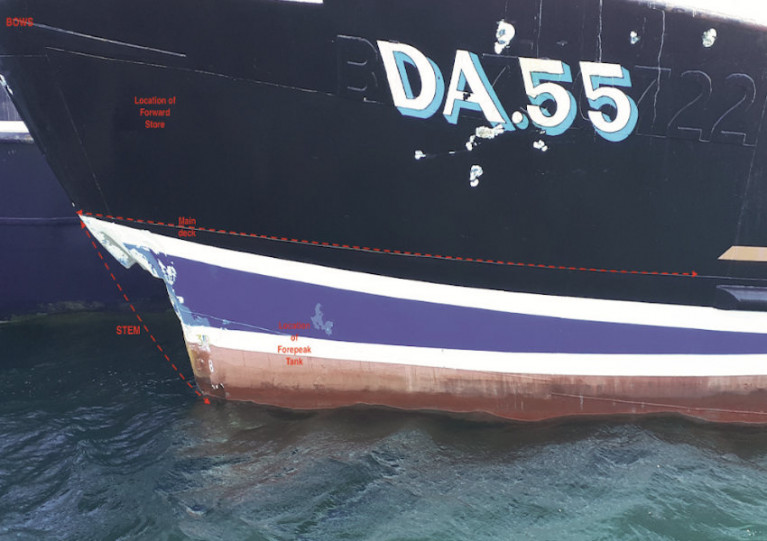Displaying items by tag: FV Dearbhla
Fishing Crews Urged to Prepare Passage Plans & Do Drills for Collisions Following MCIB Report
The latest Marine Notice from the Department of Transport calls on the owners, operators, skippers and crews of fishing vessels to prepare passage plans as well as contingencies or groundings or collisions.
It comes in the wake of recommendations from the Marine Casualty Investigation Board (MCIB) in its report on an incident involving the FV Dearbhla in the Blasket Islands in May last year.
As previously reported on Afloat.ie, the 23-metre trawler ran struck rocks near Inis na Bró on 14 May 2020 while no crew member was alert at the helm.
It emerged that the vessel had no tea-maker in the wheelhouse, so the crew member on watch had gone to his bunk to make tea and failed to turn on the watch alarm on his return, and fell asleep shortly after — meaning that a required course correction on approach to the Blaskets was not made.
In response to the report’s findings and recommendations, Marine Notice No 11 of 2021 reminds all fishing vessel owners, operators, skippers and crew:
- To ensure all navigation is planned in adequate detail and that passage plans, with contingency plans where appropriate, are compiled and made known to the crew of the vessel. Afloat.ie has more HERE.
- To develop contingency plans and procedures for a grounding event or collision incident, as previously highlighted on Afloat.ie.
The department also wishes to remind all of the statutory requirements pertaining to training, drills and musters, as well as the reporting obligations for incidents at sea.
Full details can be found in Marine Notice No 11 of 2021, a PDF of which can be downloaded below.
























































